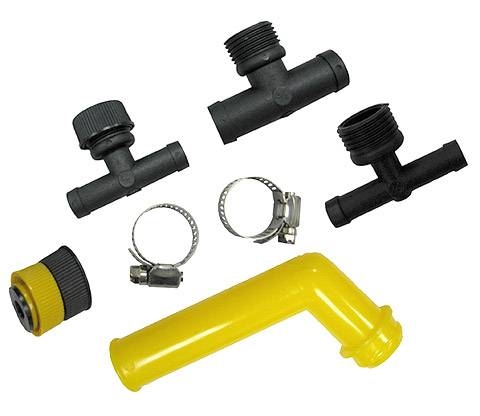
The heater core in a 2001 Volkswagen Passat can be flushed using a common garden hose connected to the heater core hose with a T-shaped flush kit adapter. The flush kits come with several sizes of adapters; the smallest of them fits the intake hose on the Passat's heater core hose perfectly. The average backyard mechanic can flush a heater core in a Passat in about 30 minutes.
Install the T-shaped adapter into the heater core's intake hose by cutting the hose in the center and securing the adapter into it with the provided hose clamps. Turn the screw on the hose clamps in a clockwise direction--they are brittle plastic, however, and they could crack if tightened too much. The adapter will have a cap on it that should be oriented toward the top, to accommodate a garden hose.

Uncap the radiator by turning the cap in a counter-clockwise direction. Place the drain pan underneath the radiator. Some kits will come with a radiator adapter that points the stream in a certain direction. Attach a piece of garden hose to it and lead the flushed coolant to the pan.
Attach the garden hose to the heater core hose T-shaped adapter and turn on the water, just a little. Too much pressure can damage the coolant system in the Passat, so a low pressure is advised. Coolant will start to rush out of the radiator and collect in the drain pan. An alternative method is to disconnect the lower heater core hose and allow it to drain solo (as opposed to flushing the system). Some old coolant may re-enter the heater core, so this method is incomplete.
Turn off and disconnect the garden hose; replace the cap onto the T-shaped adapter. Some water can be drained from the radiator by loosening its drain plug (counter-clockwise), draining the water out, tightening the plug, then filling the radiator with 100 percent antifreeze/coolant. This will mix with the 100 percent water in the system to a ratio of about 40 to 60 percent coolant to water.